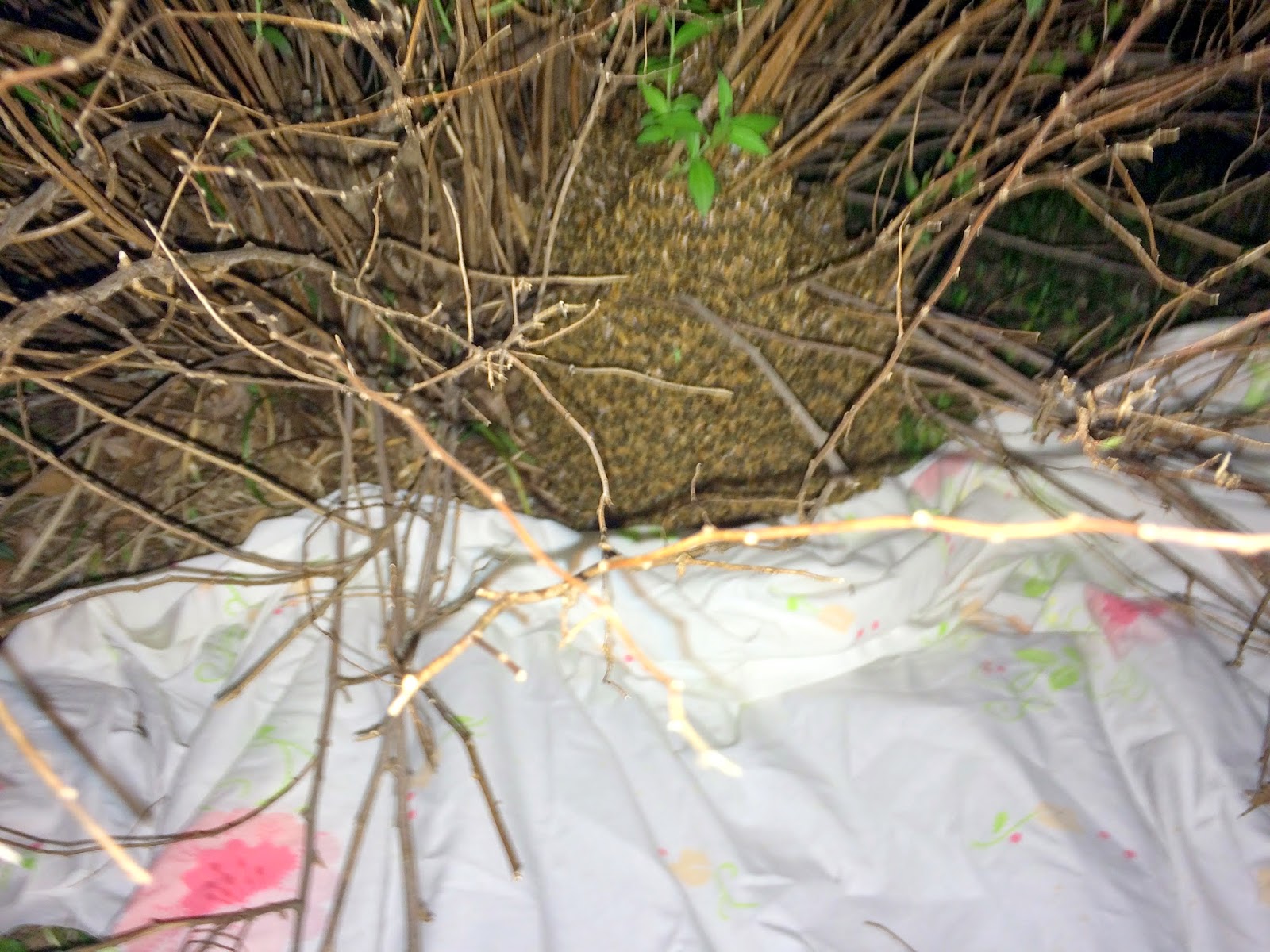It's swarm season and all of us beekeepers cross our fingers that we will get a swarm call - it's an adventure: driving to an unknown address, evaluating the bee situation and rescuing the swarm. Then you drive back home, bees in the car, and install the bees in your own backyard or bee yard.
Free bees - the best!
But, no.....even better is what happened to me today.
I had two hives that died or absconded before the winter began. One was the two-year-old Sebastian hive that we moved to my backyard from the professor's yard at the beginning of last year's bee season. I guess I kept hoping it hadn't really happened so I never took the hive apart.
I've noticed a number - I should say a growing number - of scout bees exploring that hive. It is four boxes high with a swarm trap entrance. I've also seen scout bees exploring the hive next to it which is also empty with good comb and two full boxes of honey. The Sebastian hive also has unharvested honey in it.
Tonight I got home around 7:30 and went out to the backyard to see the bees. I heard a pretty loud bee buzz/hum which is not my usual experience back there at this time of day. Suddenly I looked over at the Sebastian hive and there were orienting bees coming in and out of the entry.
I believe a swarm has moved in and that's even better than going on a swarm call. Free bees and no time or effort spent to get them! I didn't have to sing "Won't you be my neighbor?" throw my shoes around, change my jacket for a sweater or anything!
I guess the best swarm trap of all is an available, empty hive with healthy drawn comb.
These two photos don't begin to convey what a beautiful day it was in my neighborhood today! So excited about these bees who have decided that they want to bee my neighbor!
I so wish I had been home and noticed the tornado of bees moving in....































